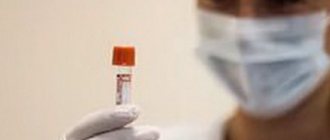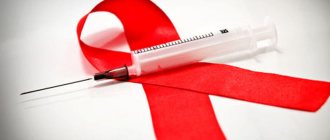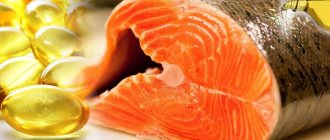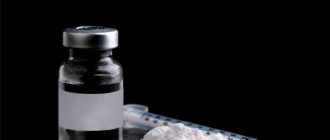Biological role of phosphorus
- phosphorus is part of many body substances (phospholipids, phosphoproteins, nucleotides, coenzymes, enzymes, etc.)
- phospholipids are the main component of the membranes of all cells in the human body
- in bones phosphorus is found in the form of hydroxyapatite, in teeth in the form of fluorapatite, performing a structural function
- phosphoric acid residues are part of nucleic acids and nucleotides, as well as adenosine triphosphoric acid (ATP) and creatine phosphate - the most important batteries and energy carriers
- phosphoric acid residues are part of the blood buffer system, regulating its pH value
What to eat?
The main sources of phosphorus are animal products: meat and milk. If a person strives to maintain an optimal balance of calcium in the body, phosphorus is usually enough for him. The highest levels of phosphorus are found in chicken, beef, fish, dairy products and eggs. For every gram of animal protein there is 12 to 15 mg of phosphorus. There is a lot of phosphorus in nuts, cereals and beans, but it is absorbed worse from plant foods than from animal foods, since it is mainly contained in the chemical compound phytin, which the human body does not absorb. Keep this in mind if you decide to give up animal products. Fruits and vegetables contain very little phosphorus.
Phosphorus deficiency
Causes of phosphorus deficiency
- period of active growth of children
- in women during lactation (up to 160 mg of phosphorus is excreted daily in milk)
- insufficient dietary intake (low protein intake)
- excess compounds of magnesium, calcium, aluminum
- various chronic diseases
- drug addiction, alcoholism
- diseases of the kidneys, thyroid and parathyroid glands
- artificial feeding of children
Consequences of phosphorus deficiency
- decreased attention, weakness, increased fatigue
- osteoporosis, muscle pain
- liver dysfunction
- immunosuppression, immunodeficiency states
- dystrophic changes in the myocardium
- hemorrhages on the skin and mucous membranes
Beauty vitamins
True beauty comes from within. You can improve your appearance indefinitely with the help of cosmetic procedures and expensive cosmetics, but this effect will be temporary if the body does not have enough strength and energy to maintain health and natural beauty. Where do these forces come from? From a balanced diet with sufficient vitamins and microelements, good sleep, adequate physical activity. We asked Vera Viktorovna Serezhina, senior physician at the Doctor Q service of the LabQuest laboratory, about the levels of which microelements need to be monitored.
The role of vitamins and microelements in our lives
F Strong nails, smooth and glowing skin, shiny hair are only visible manifestations of a sufficient supply of vitamins and minerals to the body. Their role is much more important. Thanks to various microelements, the functioning of internal organs is normalized, nerve impulses are transmitted, hormones and biologically active substances are secreted. If a person’s diet is monotonous or lacks certain food groups, a deficiency of several vitamins and microelements develops at once. In this case, the symptoms can be very different, i.e. It is almost impossible to make an accurate diagnosis without research, and taking multivitamins for “prevention” is a useless idea, since there are special regimens for taking certain vitamins.
The most important “vitamins of beauty and health”
The seven most important vitamins and microelements, the lack of which can lead to serious consequences for the body and immediately affect the appearance: calcium, magnesium, phosphorus, vitamin B12, folic acid, iron and zinc. They are found in varying proportions in almost all food products. But in order for the body to receive these substances in sufficient quantities, it is necessary to follow a nutritious and varied diet.
Calcium
Calcium metabolism in the body is regulated by the thyroid and parathyroid glands. Excess of this microelement is excreted by the kidneys. It is present in greatest quantities in bone tissue and is essential for healthy nails, teeth and hair.
The functions of calcium in the body are multifaceted: from maintaining the strength of bones, teeth, beauty of hair to the soft functioning of the intracellular structures of cells - the enzymes that it regulates, and has anti-inflammatory and anti-allergic effects. The calcium requirement per day in adults is 0.8–1 g per day. Calcium requirements increase in pregnant and breastfeeding women and athletes.⠀
Food sources of calcium include: dairy products, green vegetables (broccoli), nuts and sesame seeds, calcium-precipitated bean curd.
Magnesium
The beneficial effects of magnesium extend to all systems of the body: calms the nervous system and improves sleep quality, relaxes the smooth muscles of blood vessels, allowing blood to circulate freely throughout the body, relaxes the bronchi, has a beneficial effect on metabolism, reducing the risk of type 2 diabetes and atherosclerosis, relieves women from symptoms PMS.
The first symptoms of a lack of this microelement will be sensations of “fly crawling” and tingling in the skin and increased excitability, with a tendency to convulsions.
Magnesium is one of the most important elements that is involved in the formation of nerve impulses in cardiac tissue and is responsible for the normal functioning of the nervous system. The first thing that suffers when there is a deficiency of magnesium in the body is mood. Irritability, neuromuscular tics, and convulsions appear. With a lack of this microelement, skin tone decreases, stretch marks form more easily, the condition of hair and nails worsens, appetite increases, which leads to a set of extra pounds.
Magnesium deficiency can occur due to low consumption of it in food or due to its non-absorption in the intestines in diseases of internal organs and painful conditions of the gastrointestinal tract, such as gluten intolerance. This microelement is found in the greatest quantities in vegetables, fruits and cereals. But due to the ubiquity of refined and fast food, magnesium consumption has decreased by almost 50% over the past few decades.
Sources of magnesium will be: wholemeal bread, cereals, legumes, green vegetables, dairy products.
The norm for magnesium content for adults is taken to be 4 mg/kg. This amounts to an average of 350 and 280 mg/day for men and women, respectively.
Phosphorus
Phosphorus plays an important role in mineral metabolism in bone tissue and ensures proper cell growth. Sufficient phosphorus content in the diet has a beneficial effect on the condition of the skin, nails and hair become stronger and look healthy.
Living matter has a huge need for phosphorus. DNA and RNA have phosphorus in their structure, energy molecules ATP, cell membranes consist largely of phospholipids (found in nervous tissue, involved in the delivery of fats, fatty acids and cholesterol). Phosphorus acts as an assistant to the work of various enzymes and, in combination with calcium, forms hydroxyapatite, the main inorganic compound of bone (50% of bone mass, 96% of tooth enamel). Phosphorus deficiency in healthy adults is possible when the phosphorus content in food is low. At the same time, the excretion of phosphorus by the kidneys decreases, but the excretion of calcium, magnesium, and potassium, which comes from the bone, increases. This causes weakness, anorexia and bone pain.
The causes of phosphorus deficiency are excess body weight, which increases the need for intracellular phosphorus, insufficient absorption of phosphorus in the small intestine due to its pathology, in diabetes mellitus a lot of phosphorus is lost due to heavy diuresis, long-term administration of phosphate-binding antacids (Renny, Gastal, Maalox, etc.). d).
Phosphorus is widely distributed in foods. Average daily phosphorus intake is approximately 1500 mg for men and 1000 mg for women.⠀
Food sources that contain a lot of protein (meat, milk, eggs and grains) are also high in phosphorus. The phosphorus content in food is approximately:⠀ 60% - from milk, meat, poultry, fish and eggs;⠀ 20% - from cereals and legumes;⠀ 10% - from fruits and juices;⠀ 3-4% - from such drinks like coffee and tea;
Vitamin B12
The passage of impulses through nervous tissue, as well as normal hematopoiesis, are impossible without vitamin B12. With its deficiency, a characteristic disease develops - B12 deficiency anemia, hyperpigmentation and premature aging of the skin begins. When vitamin B12 and vitamin C interact, active oxygen molecules are formed that have anticancer and fungicidal (antifungal) properties.
Chronic vitamin B12 deficiency leads to weakened immunity and chronic fatigue. The risk group for vitamin B12 deficiency includes: vegetarians and vegans, patients with diseases of the stomach and intestines, taking proton pump inhibitors (omeprazole, OMEZ), H2 blockers of histamine receptors (ranitidine, etc.), patients with diabetes mellitus and other diseases, long-term users of Metformin.
Most of the vitamin is present in red meat and some types of legumes.
Folic acid
Every pregnant woman takes this vitamin in the first trimester in order to reduce the likelihood of having a baby with pathologies of the nervous system. For everyone else, the vitamin is useful for normalizing the activity of the nervous system, strengthening nails and hair. Folic acid enters the body with food. It is found in beans, parsley, lettuce, cabbage, tomatoes, spinach, asparagus, liver, kidneys, meat, mushrooms, and yeast.
Iron
The first manifestation of iron deficiency in the body is anemia. According to statistics, 40% of women of reproductive age have varying degrees of anemia. The female body especially suffers from iron deficiency during pregnancy and lactation. Hair loss, nervousness, dry and flaky skin can all be a consequence of iron deficiency.
Iron in the body is involved in numerous redox reactions and is necessary for many enzymes and proteins, and is necessary for the transport of oxygen and carbon dioxide in hemoglobin.⠀
Symptoms of iron deficiency may initially be so subtle that their duration is difficult to date. Patients may not be aware of the presence of the disease; deviations from the norm may be discovered accidentally during a blood test, for example.
If a deficiency of moderate or moderate severity appears, symptoms such as:
- fatigue, increased fatigue and pallor, - shortness of breath on exertion and palpitations, - geophagia (perverted taste preferences) is often observed: eating clay, starch, salt, cardboard and ice, and it is not always corrected with iron supplements, - glossitis (inflammation of the tongue , with atrophy of the papillae of the tongue and decreased sensitivity), - seizures in the corners of the mouth (angular stomatitis), - with chronic iron deficiency, nails can become brittle, dull, brittle and subsequently have the shape of a spoon, - swelling of the optic nerve and decreased vision ⠀ Dietary sources of iron: mammalian meat - beef, poultry or fish, and least of all - eggs, milk and cereals. Iron is poorly absorbed from wheatgrass, legume butter, spinach, lentils and beet greens, all foods high in phytate.
Zinc
Zinc is considered the main microelement of the reproductive system and is also involved in the regeneration of skin cells, hair, and nails. For men it is important for the maturation of sperm, and for women - for the formation of an egg.
A lack of zinc leads to poor tissue regeneration and growth, loss of hair color with the appearance of gray hair, focal hair loss, lowers mood, and causes drowsiness.
Zinc deficiency occurs with intestinal diseases, often of an inflammatory nature, in which the absorption of zinc is impaired, with alcohol abuse, with diabetes, in which the excretion of zinc is increased, resulting in a decrease in its amount in the blood.
A balanced diet aimed at replenishing this element from food products, as well as treating diseases that could lead to its deficiency, will help cope with a lack of zinc in the body. ⠀ High zinc content in the following products: meat, liver, eggs, seafood, whole grain bread, legumes, nuts.
Lack of vitamins and microelements develops much more often than hypervitaminosis. However, such a condition is possible if a person takes complex vitamin supplements to the diet for a long time and without indications. For example, excess iron in the body leads to a disease - hemosiderosis, one of the manifestations of which will be the appearance of “rusty-colored” pigment spots on the skin. The danger of hemosiderosis is that excess iron, in addition to the skin, is deposited in the internal organs, disrupting their functioning.
Before adding any vitamin supplement to your diet, it is important to check the current level of trace elements and vitamins in the blood and select a drug based on the body's needs.
Author: Serezhina Vera Viktorovna Senior doctor of the service Doctor Q Laboratory LabQuest
Excess phosphorus
It is rare - it is important to maintain the optimal ratio of phosphorus to calcium (1:1). Excessive amounts of phosphorus are especially dangerous for children in the first months of life, which can lead to nephropathy.
Causes of excess phosphorus
- excess phosphorus intake (for example, from excessive protein intake)
- work in hazardous working conditions
Consequences of excess phosphorus
- deposition of phosphorus in various tissues in the form of phosphates
- kidney stones
- liver pathology
- gastrointestinal disorders
- bleeding, hemorrhage, anemia
- decalcification of bone tissue
History of discovery
The discovery of phosphorus is attributed to a certain Brand, a German alchemist. Like his other “colleagues,” Brand was looking for the philosopher’s stone, a substance capable of turning everything into gold. In his opinion, urine, like nothing else, was suitable as a raw material for the philosopher's stone. After all, its color was also golden.
Upon settling, a dry sediment formed in the urine. In the process of further distillation of the sediment, Brand obtained a new substance. This substance burned and in the dark gave off a bluish glow. Brand immediately called it phosphorus, which translated from Greek means luminiferous (phos - light, foros - carrier). This happened in 1669.
True, Brand soon became convinced that, apart from a pleasant glow, the new substance was unremarkable. Phosphorus could not transform metals into gold, and was not suitable for the role of the philosopher's stone. In order to gain at least some benefit, he sold the extraction method to other alchemists.
And soon a new technology for its production, not related to urine, was developed. And in 1771, the Swedish chemist Scheele isolated phosphorus from bone ash.
Find out more about our weight loss programs:
The reason for the excess content of the chemical element is the abuse of protein foods, as well as products artificially saturated with phosphates (sodium E339, potassium E340, calcium E341) and phosphoric acid (E338). These compounds are often used in baking (as a stabilizer), sugar production (as a clarifier), butter (increases shelf life), and processed cheese (for desired consistency). The substances are also present in condensed milk, sausages, canned and frozen berries and fruits. A derivative form of the metalloid is widely used as an acidulant in carbonated drinks.
Excessive phosphorus content in the body manifests itself in this way:
- headaches;
- vomiting;
- weakness;
- frequent unpleasant sensations in the esophagus, burning;
- increased susceptibility to pneumonia.
In the modern world, P oversaturation is more relevant than macronutrient deficiency. This is because many of the products on supermarket shelves are made with phosphates. They are approved by WHO, do not cause harm in limited quantities, make food more attractive - they prevent clumping and loss of beautiful color. But it is still necessary to limit the volume of such products on your table. It is recommended to increase the share of organic farm products. They are less convenient because they deteriorate faster and lose their appearance. But they help maintain the correct balance of macro- and microelements, thereby positively affecting health and well-being.
The consequences of oversaturation with a chemical element can be very serious. Immunity decreases, blood clotting worsens, salts are deposited in tissues and organs, and hemorrhages often occur.
Nutritionist's comment:
If a problem is detected, the diet should be adjusted. As an emergency measure that will slow down the absorption of phosphates already entering the gastrointestinal tract, aluminum hydroxide is prescribed.
Interpretation of results
In patients over 12 years of age, the macronutrient level should be in the range of 0.81-1.45 mmol per liter. For children of different age groups, their own reference values have been established. To correctly interpret the results, establish an accurate diagnosis and prescribe treatment, you must consult a doctor. The test is not intended for self-diagnosis.
Decreased macronutrient levels
there may be various reasons. These include, for example, uncontrolled use of a number of drugs, hypothyroidism, rickets, hyperparathyroidism, malnutrition, hypokalemia, and alcoholism. Decreased rates are also observed in patients with severe burns.
For children, the macronutrient norm is higher than for adults. Until the age of 12, maintaining its normal level is especially important. A deficiency can cause brittle bones and short stature.
Excess phosphorus
can be caused by kidney and liver diseases and a number of other pathologies. Over time, excess phosphates can be deposited in tissues, causing damage to internal organs.
It must be taken into account that eating food within 2-3 hours before taking blood leads to falsely low results. During the day, the concentration of macroelements in the blood is subject to fluctuations (in the evening it increases). In addition, phosphorus levels are affected by many medications. Therefore, the doctor who will interpret the test results must be informed about the use of medications prescribed by other specialists.
Synthetic analogues
The most famous phosphorus-containing drug is ATP, an artificial analogue of natural Adenosine Triphosphate. This drug is used in cardiological and neurological practice to improve myocardial contractile function and stimulate the nervous system.
Another drug, Phytin, is a combination of calcium and magnesium salts of inositol phosphoric (phytic) acid. This remedy is used to correct phosphorus-calcium metabolism.
Other phosphorus-containing agents include Lipocerebrin, Phosphrene, Glycerophosphate. They are used as a tonic and restorative. Lecithin is used for the same purpose.
This remedy is included in many food supplements to improve metabolism, stimulate brain activity, immunity, and prevent atherosclerosis.
Lecithin is actively used in the food industry and in cosmetology.
Phospholipids containing phosphorus are included in hepatoprotectors, drugs for the prevention and treatment of liver diseases (viral hepatitis, chronic hepatitis, fatty liver, other congenital and acquired hepatoses).
The most famous hepatoprotectors, Essentiale and Phosphogliv, contain essential (natural) phospholipids as active ingredients.
Organophosphorus compounds (OPCs) are used in ophthalmology. They constrict the pupil and reduce IOP (intraocular pressure), which makes them effective for glaucoma. One such remedy is Phosphacol in eye drops.
In everyday life and in agriculture, FOS are used as insecticides, means to destroy harmful insects - flies, mosquitoes, cockroaches, caterpillars, Colorado potato beetles, etc. Known to many, Chlorophos, Dichlorvos, Thiophos belong to FOS. The action of FOS is based on the anticholinesterase effect.
The neurotransmitter acetylcholine, after fulfilling its function of transmitting nerve impulses between neurons, is destroyed by the enzyme cholinesterase.
If cholinesterase is blocked using FOS, acetylcholine continues to act and has toxic effects. OPC poisoning is extremely severe with muscle cramps, depression of consciousness, bronchospasm and spasm of the smooth muscles of the gastrointestinal tract. Emergency hospitalization and intensive care are required.










